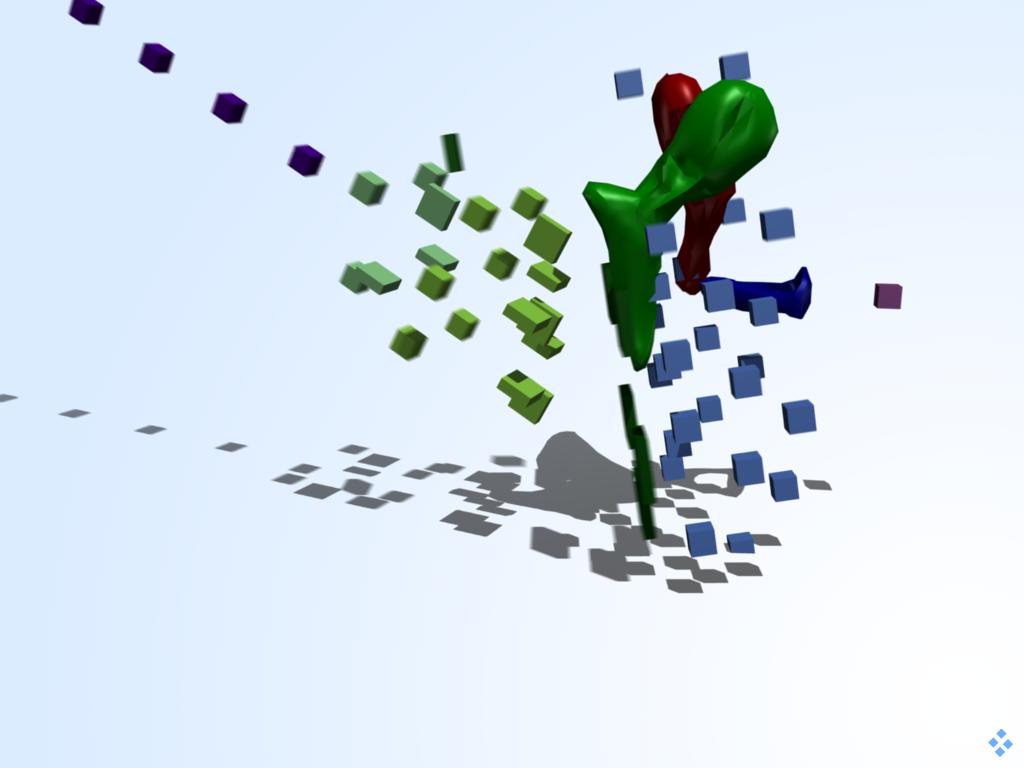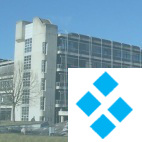 |
|
||||||||||||||||||||||||||||||||||
|
|||||||||||||||||||||||||||||||||||
|
|
|||||
DescriptionFor the three-dimensional visualization of multibody systems (MBS) and particle systems, it is common to use OpenGL based graphics programs. For their real time capabilities these are very well suited to visualize large data sets. A dynamical motion of the camera eye by operations such as rotating and zooming allows for an intuitive adaption of the perspective.One disadvantage of the OpenGL based visualization tools is the absence of shadows which are not part of the OpenGL standard. A shading of 3D surfaces is often not sufficient to be able to grasp the relative placement of bodies. Shadows are a great help for the depth perception of the human eye. In case a body is situated between a light source and another body, it casts a shadow on the latter. Thus the human brain can take advantage of the shadows to perceive the relative placement of the bodies. A common method to generate realistic images is the so called raytracing. This method casts a set of rays from the camera eye to the objects in the scene which are reflected, refracted and absorbed by the objects. Thus considering shadows, very realistic images can be created. To visualize simulation data from multibody simulations or particle simulations, the geometry of the bodies has to be specified and the positions and orientations of all bodies have to be supplied as time dependent data to the raytracing program. After the camera position and the position of light sources are defined, it is possible to render images of the scene which can also be combined to movies. Graphical effects such as motion blur, that combines the information of several time steps to one image, can be used to intensify the visual impression. For the raytracing of multibody systems, Frank Nägele developed a python program at the Institute of Engineering and Computational Mechanics, that is based on the open source raytracing program blender. This program enables the user to comfortably import data of the institute's visualization program Anim and to automatically generate raytraced images and movies from the data sets. Some examples for images and movies that were created by Frank Nägele with the program anim2blender are depicted below. 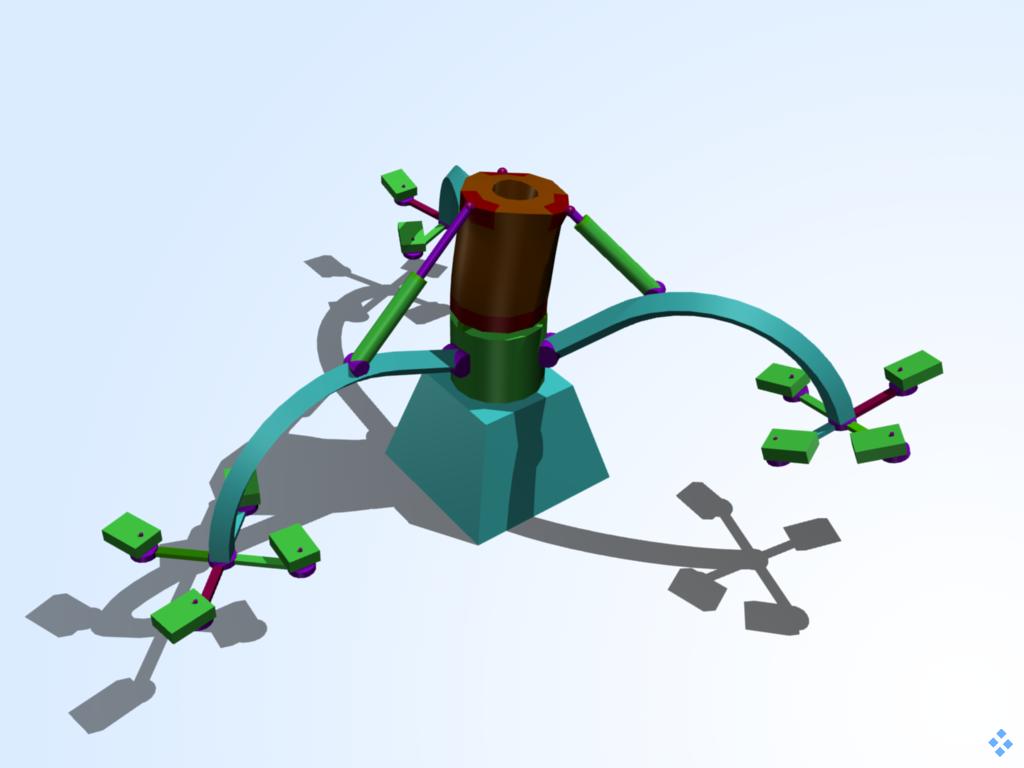
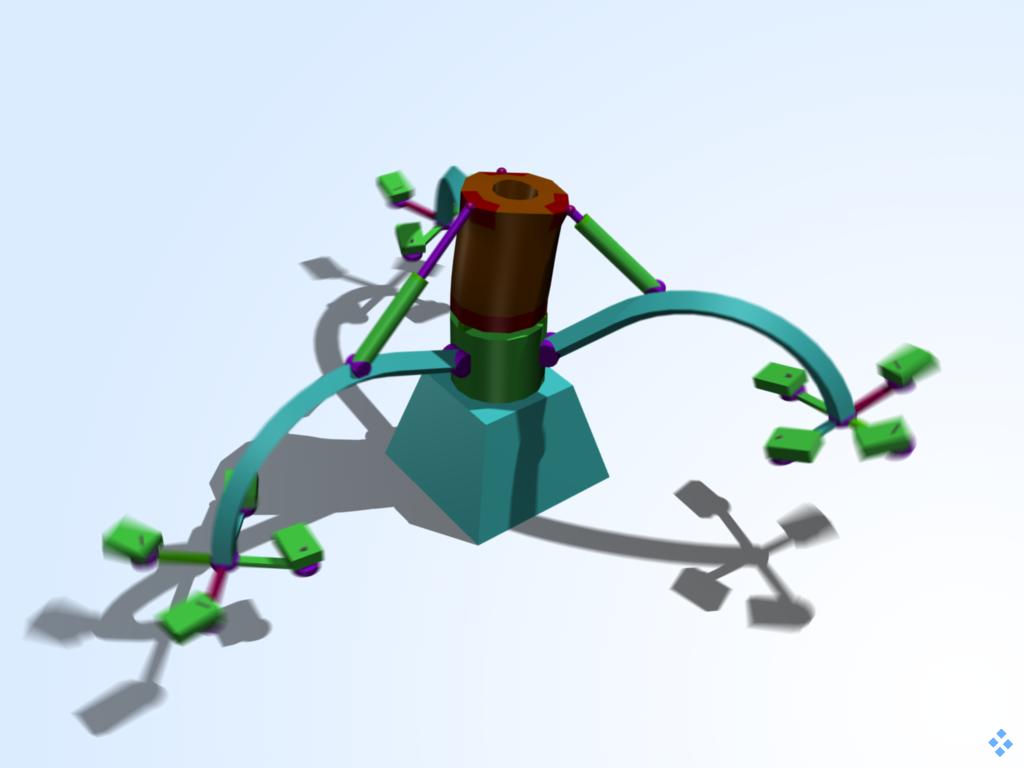

EMBS (elastic MBS) model of a fictive fairground ride with a flexible cylindrical body in the center. The images are depicted with growing motion blur from left to right. The models were generated and simulated by Lars Kübler for his doctoral thesis. (avi-Video, DivX5.2.0).

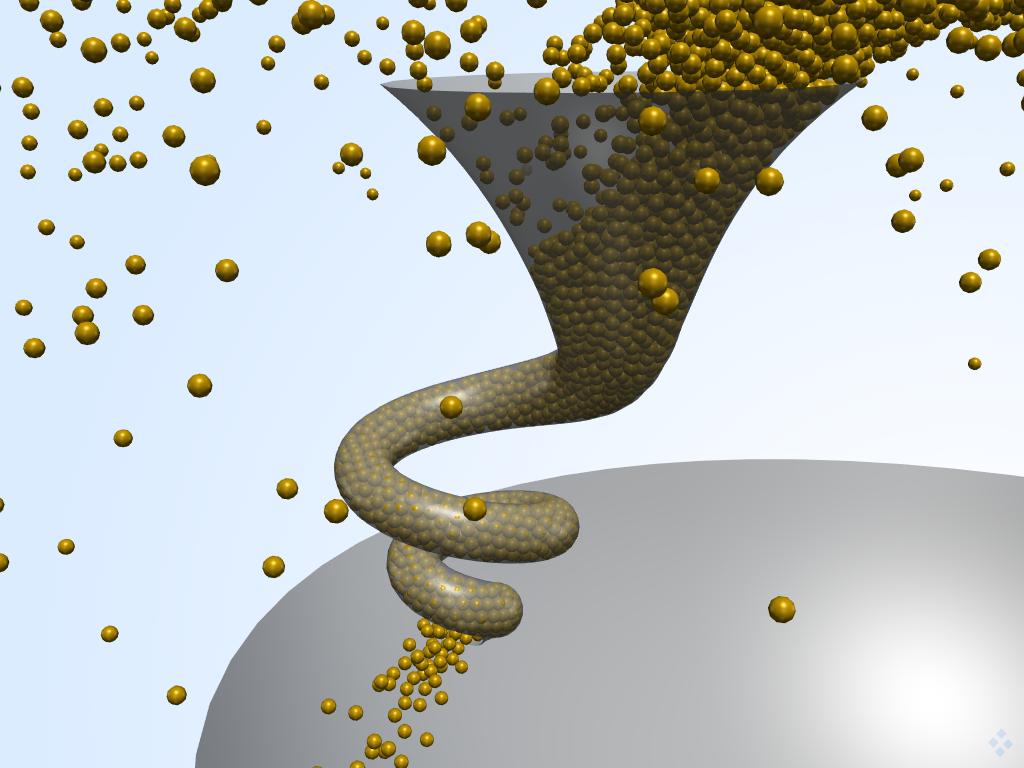
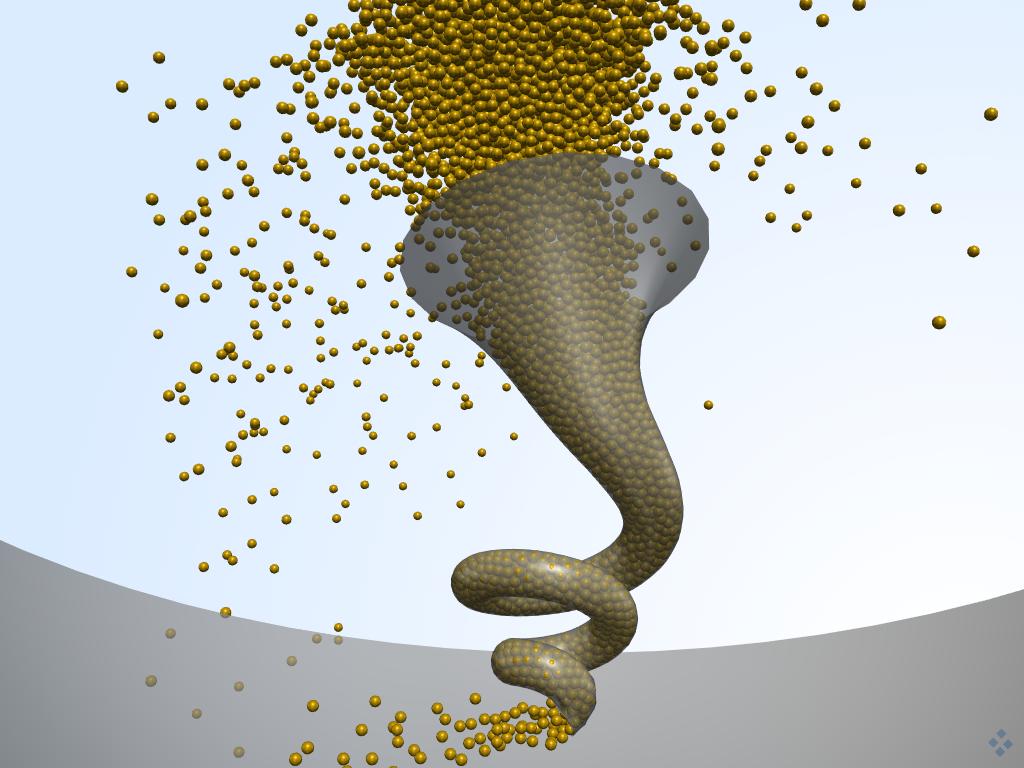
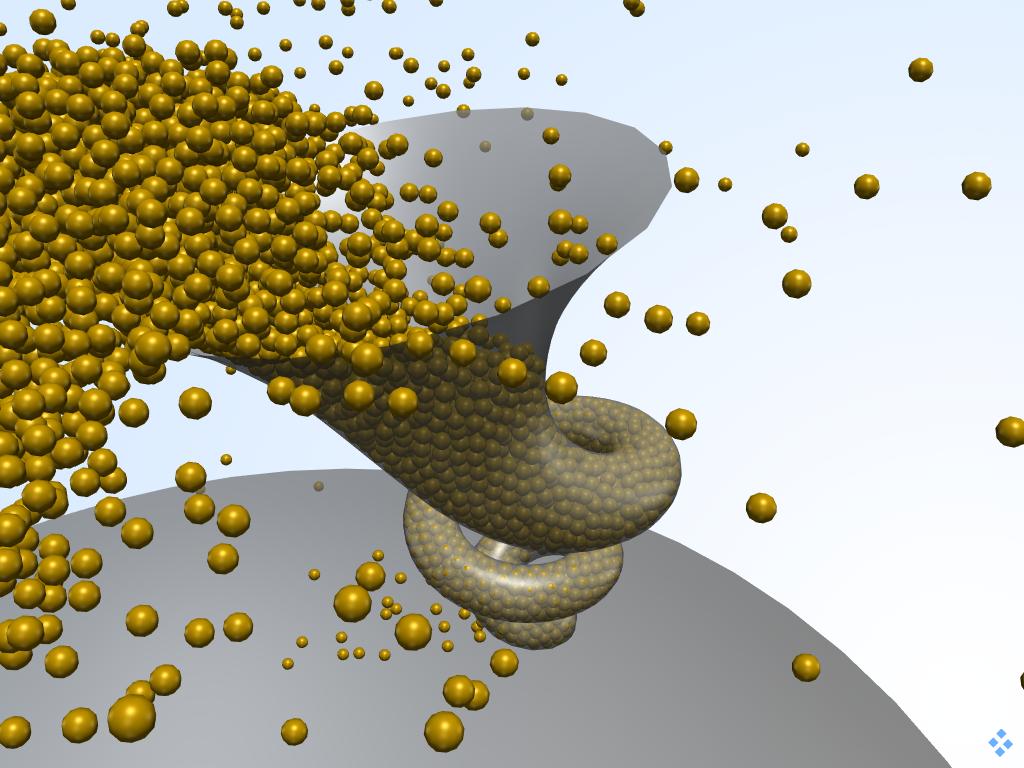
Pouring granulate into a trumpet-shaped conveyor. Model generated and simulated by Florian Fleißner. 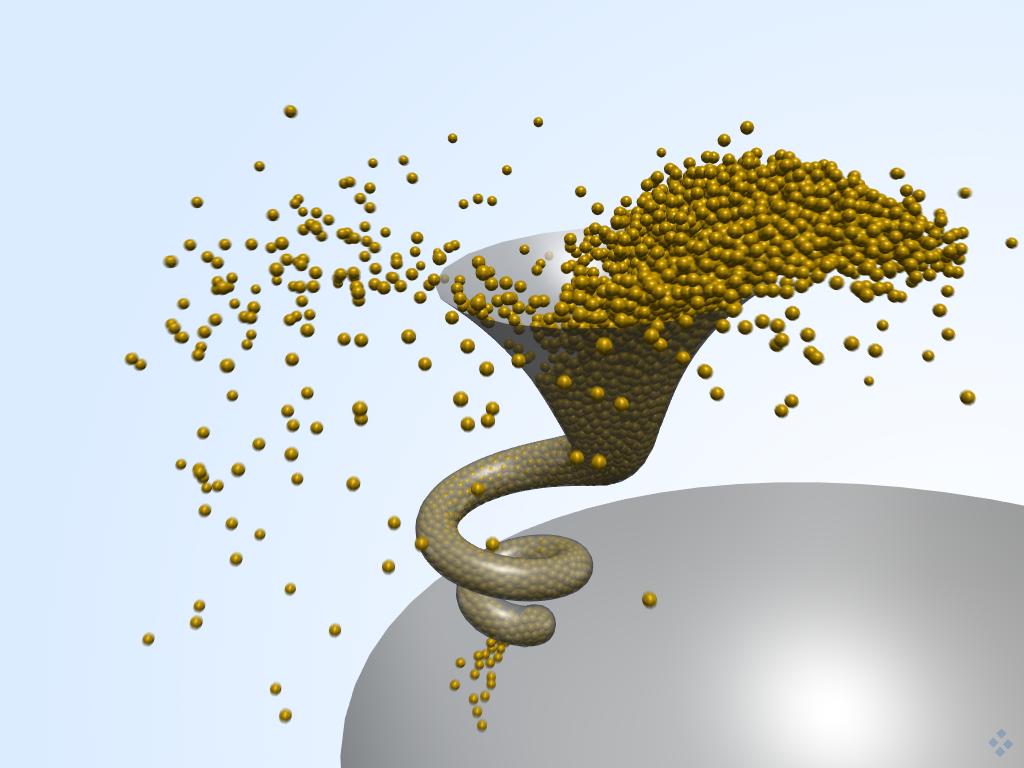

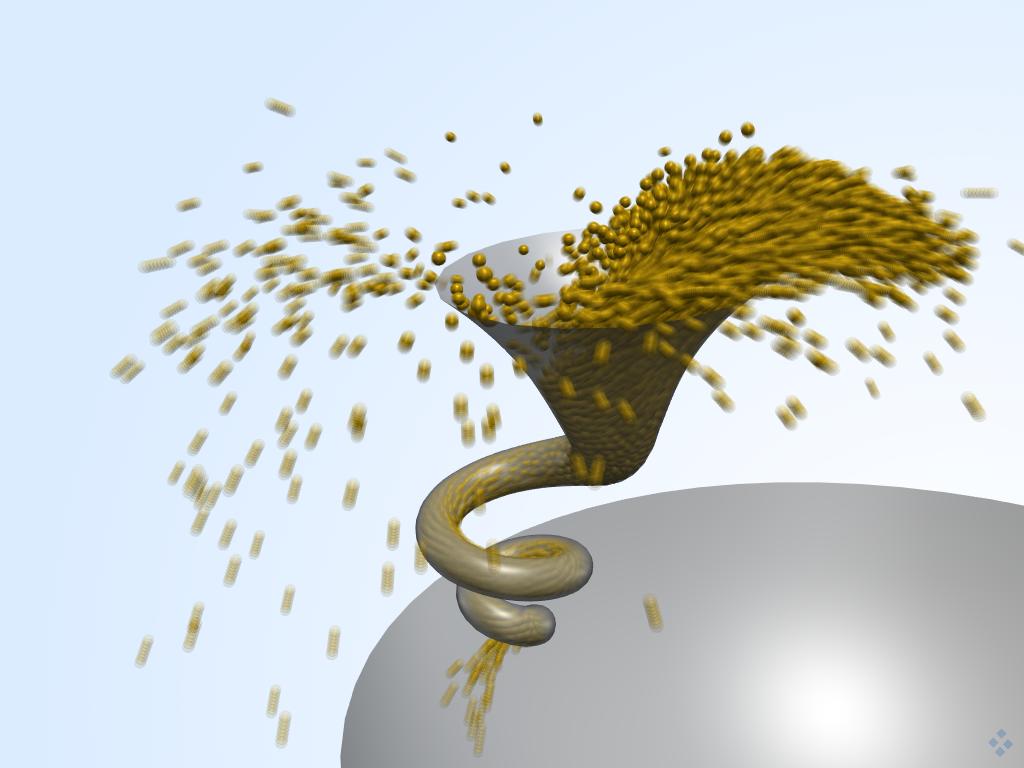
The same scene as above with growing motion blur from left to right. Contact |
| Last modified
2.11.2012 ( |

